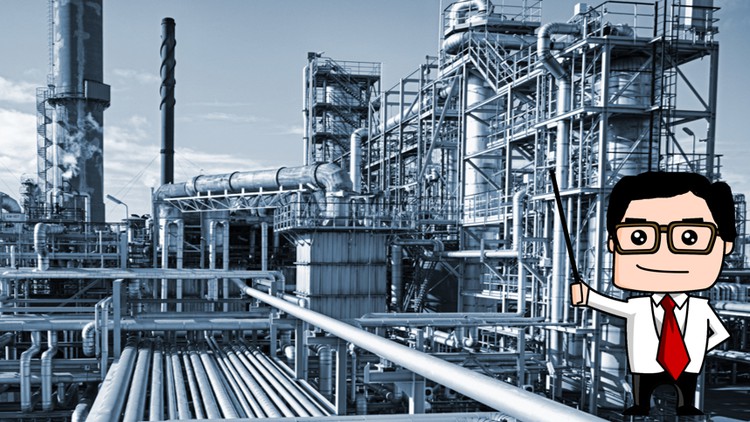
What you will learn
Basics of pipe stress analysis
Types of loads, stresses and loads combinations on piping systems as per ASME code
ASME Code requirements for pipe stress analysis
Types of piping supports [Rigid supports, Variable supports, Hangers…etc]
How to use Autopipe software to create any piping 3D Model
How to add and define different piping fittings such as bends, Tees, Flanges, Valves, Expansion bellows…etc
How to model pumps & vessels nozzles in Autopope software with different techniques
How to interpret the stress analysis output and to optimize supports design
How to compare system stresses and deformations with the code allowable limits
Attached sample Autopipe full model for one of the major pump stations in gulf region
Description
This course is perfect for any engineer interested to start a career in pipe stress analysis but overwhelmed by many unorganized information and doesn’t know from where to start.
This course is designed to guide you through pipe stress analysis process starting from scratch till being able to understand piping isometric drawings, creating a full 3D analysis model, choosing supports types & locations, checking code requirements and finalizing the design drawings/report.
This course consists of 3 sections which are as following :-
-
Section One :-
In this section, you will learn the very basics of the pipe stress analysis including when & why do we have to carry out pipe stress analysis, and the main concepts such as
– Loads & stresses on the system
– Loads combinations
– ASME Code compliance
– Supports optimization.
– Pipe stress analysis workflow
Once you are familiar with the pipe stress analysis workflow, you will be ready for the following section
-
Section Two :-
In this section you will learn how to create a new model from scratch and how to model many components such as pipe bends, tees, valves, expansion bellows, pumps and basically any kind of fitting might be in your system.
During modeling you will learn the following
– How to model pumps nozzle using different ways
– How to model surge vessels using different ways
– How to add rigid and flexible supports and how to carry out the springs design.
And many other modelling modifications techniques such as stretching, mirroring, adding segments…etc.
Once the 3D modeling is finalized, you will be ready for the following section
-
Section Three :-
In the third section, you will start investigating the output results of the analysis including the system deformations, stresses, pump nozzle loads, supports optimization, and we will learn how to understand and asses the system behavior and how to fix any failing segments of the system.
you will also learn some valuable techniques for pipe rerouting such as expansion loops.
-
Bonus Resources :-
By the end of the course, and as bonus resource, you will receive an Autopipe model file which we have used during our course, this will give you a chance to train and enhance your modeling skills.
In addition to that, you will receive a soft copy of ASME code as well as AutoPIPE software guide book.
Content